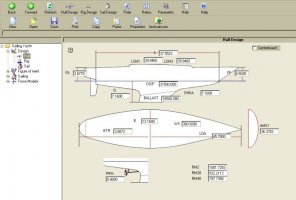Roger Ware
Member III
This is a question for Seth and anyone else who wants to chime in. Can anyone hazard a guess as to the optimum downwind sailing angle for an A sail tacked to the forestay? I was attempting to race my E38 last weekend and it seemed to me that deeper than, say, 110-120 degrees true the boat slowed down so markedly that it probably doesnt pay. Wind speed was about 10 knots. Didnt try to measure VMG though, although I could probably try with the GPS. Of course, at that angle to the true wind, you are not making much VMG, hence my confusion.
Cheers, Roger
E38 200 Kingston, ON
Cheers, Roger
E38 200 Kingston, ON
Last edited:


